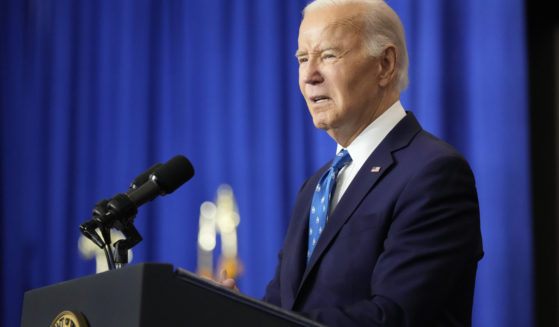YouTube Content Deemed 'Alt-Right' Actually Leads to 'De-Radicalization,' According to New Study
A new study published this month pushes back against claims that the flow of conservative political commentary online leads Americans to the extreme far right of the political spectrum.
Instead, the study argues, the rise in conservative content is pushing YouTube viewers away from radical extremes.
The study is called “A Supply and Demand Framework for YouTube Politics,” and it was written by Kevin Munger and Joseph Phillips of Penn State’s political science department, according to The Daily Wire.
The study rejects the fear expressed about content that the study calls the “Alternative Influence Network” — a label for content that pushes back against mainstream media reporting and supposedly lures viewers “down a ‘rabbit hole’ into which they become trapped, watching countless hours of alternative media content and becoming hardened opponents of liberal democratic values and mainstream knowledge production institutions.”
The claim that YouTube is a “radicalizing agent” is just not true, the study says.
In assessing who watches what, the study parsed content providers into groups called “Liberals,” “Skeptics,” “Conservatives” “Alt-Lite” and “Alt-Right.”
Conservatives, the study says, “often lampoon the use of identity politics and de-platforming by mainstream progressive social movements, but unlike skeptics, they also disagree with mainstream liberals in principle.”
“They tend to have more traditional pro-market and socially conservative beliefs. They are different from further-right segments of the AIN, however, in that they explicitly oppose anti-semitism and open appeals to race.”
Contrary to the ‘gateway drug’ narrative, new study shows the Intellectual Dark Web (i.e. @jordanbpeterson @prageru @joerogan @benshapiro @RubinReport ) is de-radicalizing potential Alt-Right viewers https://t.co/fyYQfGT8xJ pic.twitter.com/NiWh3iXnMw
— Eric Kaufmann (@epkaufm) October 24, 2019
Examples of those who fit into the “Conservative” group are commentators such as “Steven Crowder, famous for setting up booths at college campuses challenging people to ‘change his mind’ about a conservative/pro-Trump belief; Ben Shapiro, a former Breitbart reporter known for criticizing the left for their use of ‘feelings over facts’; and Dennis Prager, host of ‘PragerU,’ a channel that expresses conservative viewpoints with an educational motif,” the study says.
The “Alt-Lite” essentially mocks the far left, the study says.
The “Alt-Right,” it adds, is “firmly committed to a far-right ideology” and often expresses “strong anti-semitism and the belief that white people are genetically superior.”
Members of this group “advocate for an all-white ethnostate” and an end to non-white immigration, the study’s authors write.
But the study found that viewership of what it labeled “Conservative” content is rising while that of the “Alt-Right” has been dropping.
“Between 2013 and 2016, all segments of the AIN, including the Alt-Lite and Alt-Right, rose in viewership. However, since the middle of 2017, both of these ideological segments of the AIN have seen a steep decline in viewership,” the study says.
“By contrast, Conservative and Liberal content creators — who have much more in common with mainstream discourse than other segments of the AIN — have either continued to grow or plateaued in viewership,” it adds. “These patterns are inconsistent with radicalization happening at a major scale; indeed, from these data alone, de-radicalization seems a more plausible baseline hypothesis.”
The study notes that the “Alt-Right” has been increasing the amount of content it puts out, but that viewership remains in decline, while content that fits in its definition of “Conservative” is rising along with viewership, making that segment of the ideological spectrum unique.
“The bulk of the growth in terms of both video production and viewership over the past two years has come from the entry of mainstream conservatives into the YouTube marketplace,” the study says.
Sow how is it that “Alt-Right” content is de-radicalizing viewers?
“Previous increases in viewership of Alt-Lite, and to a lesser extent, Alt-Right content reflected such content being the most ideologically adjacent to conservative users,” the study says.
“This content did not align with most users’ views, however, and increased competition from traditional Conservative and Liberal viewpoints enticed large portions of the this audience to abandon what was once the only game in town.”
In other words, the study’s bottom line is that YouTube viewers viewed “Alt-Right” content when it was the closest thing online to their beliefs, but now that more mainstream conservative views are being represented, YouTube viewers are turning away from the extremes, therefore making them less radical.
“[A]lternative voices on YouTube discuss topics mainstream media fails to touch, which may help them feature more prominently in search results and recommendations,” the study says.
“However, since 2017, viewership of the furthest-right content has declined despite increases in the supply of such content. In its place has been the rise of more mainstream-adjacent conservative and liberal creators, consistent with a large share of users finding ideological communities that best fit their ideal points.”
Truth and Accuracy
We are committed to truth and accuracy in all of our journalism. Read our editorial standards.
Advertise with The Western Journal and reach millions of highly engaged readers, while supporting our work. Advertise Today.












